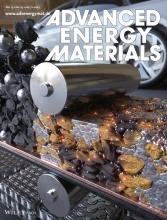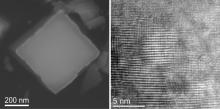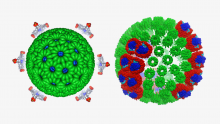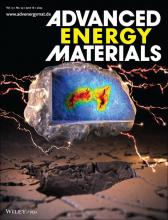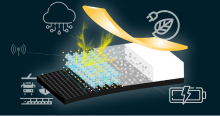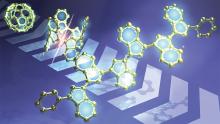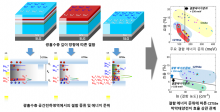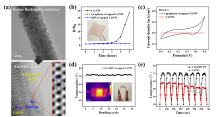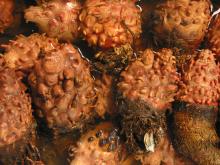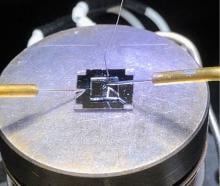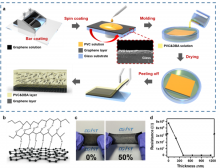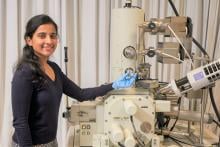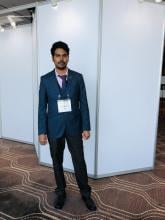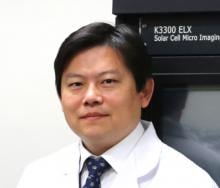Energy
News
15 Sep 2023
- Research team led by Professor Hongkyung Lee at DGIST developed a manufacturing process for high-quality thin film lithium cathode based on electroplating that can replace commercial lithium foil
- Expected to improve battery life and replace existing lithium foil due to simple size enlargement
15 Sep 2023
- DGIST-ETRI joint research team developed high-energy-density, high-stability all-solid-state battery electrode by applying the prelithiation technology to graphite-silicon electrodes
- Selected as the back cover study by “Advanced Energy Materials,” the best international academic journal in energy
14 Sep 2023
- Team led by Professor In Soo-Il at DGIST develops a titanium dioxide photocatalyst with enhanced optical and electrical properties utilizing silver and ruthenium
- 135-fold increase in methane production compared to conventional TiO2 photocatalysts (95% selectivity proven)
13 Sep 2023
Systematic copper doping boosts all-solar utilization in tungstic acid nanocrystals.
08 Sep 2023
Capturing carbon dioxide, Shells go nuclear, Worms surf electric fields, Brain repair & Creating matter from light. Plus from our blog: Monitoring research for further impact. Read all in the latest Editor's Choice.
31 Aug 2023
Applied Microbiology International (AMI) is boosting training and development opportunities for early career scientists in journal publishing with the appointment of 14 new junior editors on its flagship journal Letters in Applied Microbiology (LAM). They were selected from more than 100 applicants by the Editor-in-Chief, Dr Marcela Hernández.

09 Aug 2023
Viruses in man-made environments cause public health concerns, but they are generally less studied than bacteria. A recent study led by environmental scientists from City University of Hong Kong (CityU) provided the first evidence of frequent interactions between viruses and bacteria in man-made environments. It found that viruses can potentially help host bacteria adapt and survive in nutrient-depleted man-made environments through a unique gene insertion.
08 Aug 2023
A joint research team from City University of Hong Kong (CityU) and collaborators recently developed a stable artificial photocatalytic system that is more efficient than natural photosynthesis. The new system mimics a natural chloroplast to convert carbon dioxide in water into methane, a valuable fuel, very efficiently using light. This is a promising discovery, which could contribute to the goal of carbon neutrality.
02 Aug 2023
Soft metal-organic polymer networks can adsorb selected molecules from gas mixtures by opening pores when the molecules bind.
28 Jul 2023
Newcastle University (UK) and the Energy Research Institute at Nanyang Technological University hosted a UK-Singapore symposium funded by the UK Government in April 2023. It aimed to foster partnerships and research for widespread electric vehicle adoption. The event featured discussions on technology, economics, and policy over three days, encouraging joint collaboration in advanced electric transport research and commercialization.
21 Jul 2023
Asia Research News monitors the latest research news in Asia. Some highlights that caught our attention this week are the potential of harvesting energy from rainfall, a new method of geolocation that can see underground, and how AI can use a single photo to make you dance.
04 Jul 2023
- DGIST-Chungnam National University Team Creates Real-Time Digital Twin Multiphysics Model for Predicting Electrochemical and Mechanical Properties of Micro-Particles for the First Time
- Cover Paper Recognition: Chosen by Prominent Journal Advanced Energy Materials
22 Jun 2023
An international team of researchers from India and Singapore, led by Associate Professor Kheng Lim Goh from Newcastle University in Singpaore, has examined the impact of plastic waste management on creating a new type of clean-energy device, Tribo-electric nanogenerator. It compares recycling practices in Singapore and India, highlighting the importance of waste policies and infrastructure for successful recycling of plastics for making the clean-energy device. Challenges include contamination and decreased material quality with recycling.
15 Jun 2023
An international research group has engineered a new energy-generating device by combining piezoelectric composites with carbon fiber-reinforced polymer (CFRP), a commonly used material that is both light and strong. The new device transforms vibrations from the surrounding environment into electricity, providing an efficient and reliable means for self-powered sensors.
01 Jun 2023
Fragments of spherical ‘Buckyball’ molecules have stable electron-accepting ability with great practical potential.
11 May 2023
Two undergraduate students publish papers as lead authors in the prestigious international academic journal ChemSusChem, proposing methods to improve eco-friendly hydrogen production through photoelectrochemistry
11 May 2023
- A joint research team of Yang Kee-Jeong, Kim Dae-Hwan, and Kang Jin-Gyu at DGIST and Kim Jun-Ho at Incheon National University used admittance spectroscopy to suggest a defect energy level in the absorbing layer that deteriorated thin-film solar cell properties
- The research team proposed a defect identification method to ensure high efficiency in thin-film solar cells
07 Apr 2023
Cambodia is leading Southeast Asia's transition to cleaner energy. After submitting its long-term strategy for carbon neutrality to the United Nations, it is now currently working with Singapore to become a major exporter of clean energy in the region.
31 Mar 2023
- Development of low-temperature, highly graphitized carbon synthesizing method that can overcome the limitations of existing fuel-cell carbon supports
- Expected to be used in next-generation fuel-cell vehicles with improved generation efficiency and excellent stability
- Study results will be published in ‘Applied Catalysis B: Environmental’, a top journal in the field of Environmental Science
31 Mar 2023
- The world’s first technology for synthesizing high-quality and low-cost copper-graphene nanowire using intense scintillation
- Implementation of high-performance transparent-flexible electronic device based on copper-graphene nanowire and publication in the international journal Nano Energy, which is renowned in the field of energy
24 Mar 2023
Scientists in Singapore converted fruit waste into a solar absorber called Mxene to develop an efficient and sustainable water desalination process.
17 Mar 2023
Asia Research News monitors the latest research news in Asia. Some highlights that caught our attention this week are a fish that is both transparent and multicolored, making mice grow antlers, and surgery on a very small heart.
08 Mar 2023
Modifying the active layer architecture at the heart of organic solar cells brings a big leap forward in efficiency.
03 Mar 2023
Bacteria living on soil and chicken manure could provide low-tech and sustainable green electricity.
03 Mar 2023
An international collaboration is developing coating materials that could make windows better insulators.
03 Mar 2023
Hi-tech electrocatalysts made from seashells and waste animal blood could help build sustainable batteries, fuel cells and other electrochemical systems.
03 Mar 2023
Shaking the compact, lightweight device generates enough electricity to power 100 LEDs.
21 Feb 2023
An effective, stable solid-state electrochemical transistor has been developed, heralding a new era in thermal management technology.
14 Feb 2023
- Elastic Triboelectric Tactile Sensor Development Using Graphene Electrode Unaffected by Elasticity
- Published in 'Nano Energy' as a Technology to Produce Precise Sensors by Supplementing the Output Change Problem of Sensors Deformed by Human Activity

31 Jan 2023
Pyroelectric catalysis (pyro-catalysis) can convert environmental temperature fluctuations into clean chemical energy, like hydrogen. However, compared with the more common catalysis strategy, such as photocatalysis, pyro-catalysis is inefficient due to slow temperature changes in the ambient environment. Recently, a team co-led by researchers at City University of Hong Kong (CityU) triggered a significantly faster and more efficient pyro-catalytic reaction using localized plasmonic heat sources to rapidly and efficiently heat up the pyro-catalytic material and allow it to cool down. The findings open up new avenues for efficient catalysis for biological applications, pollutant treatment and clean energy production.
Events
Sorry, no events coming up for this topic.
Researchers
Nanyang Technological University
Dr. Sravya Tekumalla is currently a Principal Investigator in Nanyang Technological University, Singapore, where she works as a Presidential Postdoctoral Fellow. In addition, she also leads a small team of staff and students working in the domain of metal additive manufacturing (commonly known as 3D printing).
Jyoti U. Devkota is a Full Professor of Statistics in the Department of Mathematics in Kathmandu University, Nepal. Her research focus is on the development and application of statistical methodology to solve problems in renewable energy, population and health.
Korea Advanced Institute of Science and Technology (KAIST)
Ordered Functional Materials, like, COFs, COPs, CTFs for membrane applications (soft actuators and energy storage & conversion)
Hokkaido University
Shinya Furukawa is an associate professor at the Institute for Catalysis, Hokkaido University, Japan.
Tohoku University
Tetsuo Endoh is a professor and the director of Center for Innovative Integrated Electronic Systems (CIES), Tohoku University, Japan.
Hokkaido University
A pioneering researcher in Systems Chemistry for autonomous behavior in multi-molecular systems. The interdisciplinary field of chemistry and physics can be contributes the development in micro-robotics and comprehension of origin-of-life.
Hokkaido University
Professor, Faculty of Environmental Science, Hokkaido University
Hokkaido University
Prof. Yuichi Kitagawa is a specially appointed lecturer at the Institute for Chemical Reaction Design and Discovery (ICReDD), Hokkaido University, Japan.
Daegu Gyeongbuk Institute of Science and Technology (DGIST)
Prof. SU-IL IN has been working at DGIST (Daegu Gyeongbuk Institute of Science & Technology) since 2012. He served as Dean of International and External Affairs 2016 ~ 2017. He received his Ph.D. in Chemistry from University of Cambridge in 2008. Subsequently he was a postdoctoral researcher at Technical University of Denmark by 2010. Then he joined the Pennsylvania State University as a postdoctoral researcher in the Department of Chemistry before joining DGIST. Professor In’s current researches include synthesis and analysis of functional nano (bio)-materials for environmentally friendly renewable energy such as photovoltaic, heterogeneous catalysis and biocatalysts. (https://insuil.dgist.ac.kr/)
Ulsan National Institute of Science and Technology (UNIST)
Prof. Kyoung- Jin Choi leads the Energy Conversion Materials Lab at Ulsan National Institute of Science and Technology (UNIST). He is also the editor of Electronic Materials Letters.
Professor in Agriculture and Education in the Iloilo Science and Technology University Leon Campus (ISAT U). Leon, ILOILO, PHILIPPINES
Giants in history
Julian Arca Banzon (13 March 1908 – 13 September 1988) was a biochemist from the Philippines who was a pioneer in alternative fuel research. Banzon investigated the use of indigenous crops as sources of renewable fuels and chemicals.
Anna Mani (23 August 1918 – 16 August 2001) was an Indian meteorologist who contributed significantly to the understanding of solar radiation, ozone and wind energy by developing a wide range of measurement tools. One of India’s pioneering female scientists, Mani excelled in the male-dominated area of meteorology and became the Deputy Director-General of the India Meteorological Department.



